
What is Lean Maintenance strategy?
Madhurima Sanyal |
22 Jun 2024 |
10:37 AM
- What Is Lean Maintenance?
- Prerequisites for Running Lean Maintenance Operations
- Benefits of Lean Maintenance
- Foundational Elements of Lean Maintenance
- Understanding Lean Approach and Principles
- What Is the Lean Approach?
- The Principles of Lean Management
- Lean Management Tools and Methods
- Cost of Materials for Testing, Maintenance, and Repairs
- Labor Costs of Unscheduled Repairs
- Labor Costs of Scheduled Maintenance
- Labor Costs of Testing
- Labor Costs of Planning and Scheduling
- Evaluating Lean Maintenance Program Efficacy
- How to Evaluate the Efficacy of a Lean Maintenance Program
- Hours of Unscheduled Downtime
- Cost of Unscheduled Downtime
- What Metrics Do I Choose to Evaluate the Impact of a Lean Maintenance Program?
- Conclusion

How Plant Maintenance Software Transforms Industrial Operations
Madhurima Sanyal 09 Jun 2024 | 07:17 AMExplore the potential of Plant Maintenance Software, and how it is revolutionizing your industrial facility's efficiency. Discover predictive maintenance, asset tracking, and real-time reporting for a seamless, high-quality operation. ...
Introduction to Lean Maintenance
Welcome to our comprehensive guide on Lean Maintenance, where we explore deeper into the key strategies that can revolutionize your maintenance operations. What is Lean Maintenance strategy? Lean Maintenance is a methodical approach aimed at optimizing efficiency and minimizing waste in maintenance process.
What Is Lean Maintenance?
Lean Maintenance is a systematic approach that focuses on minimizing waste and optimizing efficiency in maintenance processes. It involves streamlining workflows, reducing downtime, and emphasizing preventive measures to enhance overall equipment reliability. By adopting Lean principles, organizations aim to improve resource utilization and achieve cost-effective maintenance strategies.
Prerequisites for Running Lean Maintenance Operations
Before diving into Lean Maintenance, it's essential to establish the groundwork. Here are the key prerequisites:
A Proactive Maintenance Strategy - Shifting from reactive to proactive maintenance ensures issues are identified and resolved before they lead to downtime.
CMMS Software to Streamline Maintenance Work - Utilizing Computerized Maintenance Management System (CMMS) software enhances organization, planning, and execution by maintenance teams.

Up-to-Date List of Asset Inventory - Maintaining an accurate inventory ensures efficient tracking of assets, enabling timely preventive and corrective actions.
Operator Training and Autonomy - Empowering operators with proper training and autonomy fosters a culture of responsibility and ownership.
Leadership Change and Lean Culture - Lean Maintenance requires a cultural shift. Leadership plays a crucial role in championing this change and fostering a lean mindset throughout the organization.
Understanding and implementing these prerequisites sets the stage for a successful Lean Maintenance strategy. As we embark on this journey together, the subsequent sections will delve deeper into the benefits, foundational elements, and metrics to evaluate the efficacy of Lean Maintenance.
Benefits of Lean Maintenance
Cost Savings
Implementing Lean Maintenance translates directly to substantial cost savings. By identifying and eliminating inefficiencies, you reduce maintenance costs associated with downtime, repairs, and resource mismanagement. Our data-driven insights reveal that organizations embracing Lean Maintenance report significant reductions in overall maintenance expenditures.
Efficiency Gains
Efficiency is the cornerstone of Lean Maintenance. Through streamlined processes and proactive measures, organizations experience notable improvements in workflow efficiency. Dive into our analysis to discover how Lean Maintenance enhance the accuracy of maintenance system ultimately boosting overall operational efficiency.
Maximized Potential

Unlock the full potential of your assets with Lean Maintenance. Our data showcases that organizations adopting this strategy witness a remarkable increase in the lifespan and performance of their equipment. By minimizing waste and optimizing resources, you harness the maximum potential of your assets, driving long-term sustainability.
Employee Engagement
The human element plays a pivotal role in Lean Maintenance, where employee engagement is key to cultivating a culture of continuous improvement. Organizations that actively implement lean maintenance strategy hinges on preventive maintenance, autonomous maintenance, and routine maintenance, witnessing a dual benefit of heightened job satisfaction and increased productivity.

Preventive maintenance emphasizes proactive measures to prevent equipment failures, while autonomous maintenance empowers frontline workers to take ownership of routine tasks, reducing dependency on specialized teams. Maintenance manager ensures regular checks and upkeep, frequent maintenance team meetings fostering a sense of responsibility among employees. Case studies underscore a positive correlation between employee engagement and the success of Lean Maintenance initiatives, emphasizing the importance of integrating preventive, autonomous, and regular maintenance operation for sustained operational excellence.
Foundational Elements of Lean Maintenance
The Foundational Elements of Lean Maintenance encompass key principles and practices designed to streamline workflows, minimize waste, and enhance overall efficiency in lean maintenance procedures.
The 5S Process
At the heart of Lean Maintenance lies the 5S Process—Sort, Set in order, Shine, Standardize, and Sustain. Explore our comprehensive breakdown of each step, backed by data-driven insights. Discover how implementing the 5S Process enhances organization, efficiency, and overall maintenance effectiveness.
Just in Time (JIT)
Lean Maintenance operates on the principle of efficiency, and Just in Time (JIT) is a key player. Uncover the power of JIT in streamlining lean maintenance procedures and reducing waste. Our data reveals the transformative effects of JIT on minimizing downtime and maximizing resource utilization.
Elimination of the Seven Deadly Wastes
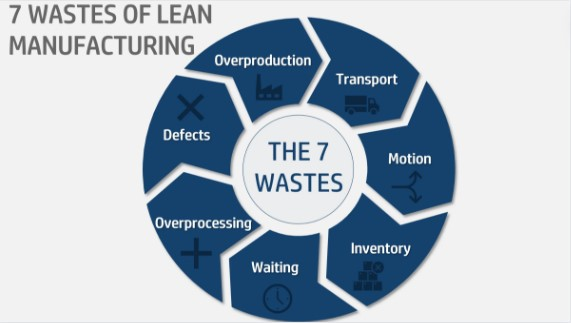
Waste is the nemesis of efficiency. Delve into the elimination of the Seven Deadly Wastes—Transportation, Inventory, Motion, Waiting, Overproduction, Over-processing, and Defects. Our analysis provides a detailed look at how targeting these wastes enhances overall maintenance scheduling, operational efficiency and drives cost savings.
Total Productive Maintenance (TPM)
Total Productive Maintenance (TPM) is more than just a maintenance strategy; it's a cultural shift. Explore the multifaceted benefits of TPM, from increased equipment reliability to heightened employee engagement. Our maintenance data-backed insights illustrate how TPM contributes to a holistic approach to maintenance.
Reliability-Centered Maintenance (RCM)
Reliability-Centered Maintenance (RCM) is a strategic approach to maintenance planning. Uncover the logical arguments behind RCM, and learn how it prioritizes maintenance work based on the criticality of assets. Our insights showcase the impact of RCM on minimizing downtime and extending asset lifespan.
Understanding Lean Approach and Principles
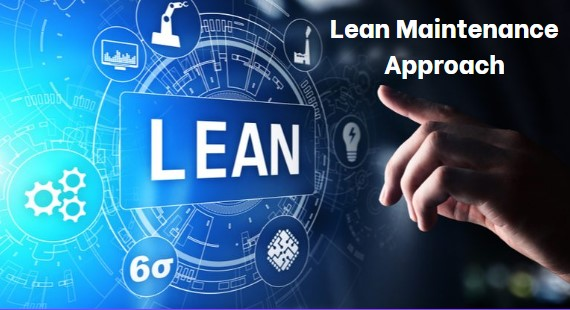
What Is the Lean Approach?
The Lean approach is a transformative philosophy that transcends traditional maintenance strategies. It's not just about fixing what's broken; it's about identifying and eliminating waste, optimizing processes, and fostering a culture of ongoing improvement. In our data-backed exploration, understand how the Lean approach revolutionizes maintenance by promoting efficiency, cost-effectiveness, and long-term sustainability.
The Principles of Lean Management
Lean Management operates on a set of principles that guide organizations toward operational excellence. Join us in uncovering these principles and their real-world applications. From value stream mapping to continuous flow, each principle contributes to the Lean framework. Our insights present a compelling case for the adoption of Lean Management principles, demonstrating how they lead to streamlined operations and enhanced overall performance.
As we navigate through the intricacies of Lean Maintenance strategy, these foundational principles will serve as your compass. Visualize the impact of the Lean approach on maintenance operations through our engaging charts and infographics.
Lean Management Tools and Methods
Tools of Lean Maintenance encompass a set of strategic instruments and methodologies designed to optimize efficiency, reduce waste, and enhance the effectiveness of scheduled maintenance principles in an organization.
Cost of Materials for Testing, Maintenance, and Repairs
Understanding and managing the cost of materials is a key component of Lean Management. Dive into our data-driven insights to discover how optimizing material usage can lead to substantial cost savings, ensuring resources are allocated efficiently for testing, maintenance, and repairs.
Labor Costs of Unscheduled Repairs
Unplanned repairs can be a significant drain on resources. Learn how Lean Management tools address labor costs associated with unscheduled repairs. Our insights provide a roadmap to minimize downtime and mitigate the financial impact of unexpected maintenance issues.
Labor Costs of Scheduled Maintenance
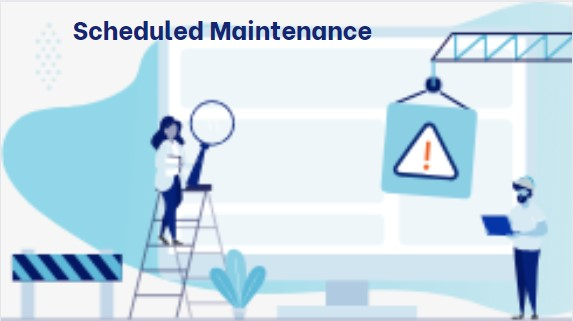
Unlock the potential of your maintenance team by implementing Lean Maintenance strategies in scheduled maintenance. Delve into our data-driven analysis to witness how Lean Management tools optimize labor utilization, striking a balance between proactive preventative maintenance measures and cost-effectiveness.
Labor Costs of Testing
Testing is a critical element of maintenance, but it can contribute to labor costs. Delve into our insights to see how Lean Management tools streamline testing processes, minimizing labor expenses while maximizing the accuracy and effectiveness of tests.
Labor Costs of Planning and Scheduling
Efficient planning and scheduling are vital in controlling labor costs. Explore how Lean tools enhance planning and scheduling processes, optimizing labor resources. Our practical insights demonstrate the impact of Lean strategies on minimizing downtime and reducing costs.
Lean Management tools ensure cost-efficient testing, aligning with the overarching goal of minimizing waste in maintenance. It empower organizations to plan and prepare maintenance teams efficiently, resulting in significant labor cost savings. As we navigate through Lean Management tools and methods, the emphasis is on practical applications that align with your business goals.
Evaluating Lean Maintenance Program Efficacy
Assessing the effectiveness of a Lean Maintenance Program is essential for organizational success. Through rigorous evaluation, it gauges the program's impact on efficiency, cost reduction, and overall operational improvements.
How to Evaluate the Efficacy of a Lean Maintenance Program
Knowing how to evaluate your Lean Maintenance program is the first step towards sustained operational excellence, setting the stage for improvement. To evaluate the efficacy of lean maintenance tasks, assess key performance indicators (KPIs) such as reduced downtime, enhanced equipment reliability, and decreased maintenance costs. Conduct regular reviews of process improvements and employee engagement to ensure sustained benefits and continual optimization.
Hours of Unscheduled Downtime
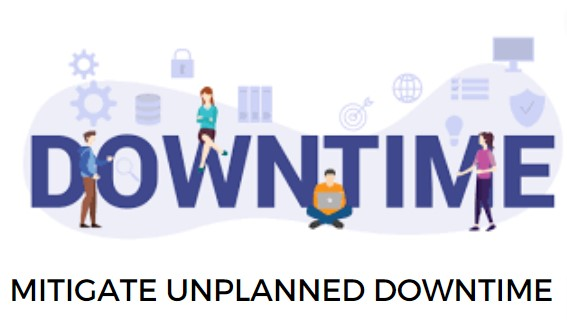
Unscheduled downtime can be a significant disruptor. Managing and reducing hours of unscheduled downtime through Lean strategies leads to increased operational efficiency and resource optimization. Hours of unscheduled downtime, a pivotal metric in lean manufacturing, reflect unplanned interruptions that profoundly impact operational efficiency and profitability. This metric scrutinizes unexpected machinery halts, revealing insights into equipment reliability and the effectiveness of the maintenance process.
To implement lean maintenance tasks is synonymous to addressing and mitigating the root causes of unscheduled downtime, aligning with lean manufacturing principles. By incorporating strategies such as predictive maintenance, real-time monitoring, and data analytics, organizations can proactively identify and rectify issues, optimizing productivity and minimizing economic losses. Regularly monitoring and analyzing hours of unscheduled downtime contribute to a continuous improvement cycle, fostering a more resilient and agile operational environment within the lean manufacturing framework.
Cost of Unscheduled Downtime
The cost of unscheduled downtime is a critical concern in lean manufacturing, encompassing not just monetary losses but also operational disruptions. Efficient maintenance process, led by a proactive maintenance team and manager, are vital for mitigating such costs. Lean manufacturing principles emphasize proactive maintenance strategies to minimize downtime, emphasizing preventive measures over reactive responses.
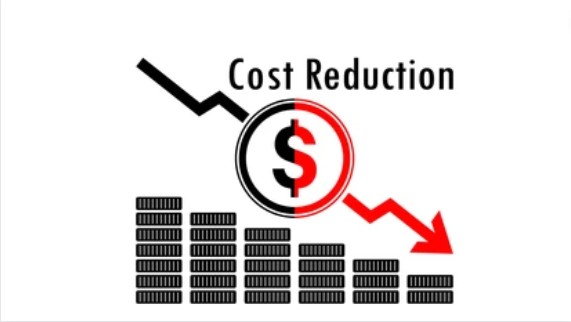
The cost implications extend beyond immediate repairs to include lost production, potential equipment damage, and negative impacts on customer satisfaction. Lean-minded organizations prioritize improvement in maintenance practices, employing strategies like preventative maintenance and regular equipment monitoring. This approach not only curtails the financial burden associated with unscheduled downtime but also contributes to a more streamlined and resilient manufacturing operation, aligning with the core tenets of lean manufacturing.
What Metrics Do I Choose to Evaluate the Impact of a Lean Maintenance Program?
Choosing the right metrics is crucial when evaluating the impact of a Lean Maintenance Program, aligning with lean principles and optimizing the efficiency of the maintenance team. One key metric is "lost production," which measures the time and revenue lost due to unplanned downtime. This metric underscores the impact of inefficient maintenance on the overall productivity and profitability of the organization.
It emphasizes a proactive approach to maintenance, reducing reliance on corrective maintenance. Therefore, monitoring the ratio of preventive maintenance to corrective maintenance provides valuable insights into the program's effectiveness. A higher ratio indicates a successful shift towards preventive measures, aligning with lean principles and reducing the occurrence of unexpected breakdowns.
Efficiency gains can be evaluated by tracking the time spent on routine maintenance tasks. The reduction in time for these tasks indicates streamlined processes and increased productivity within the workflow. Implementing lean principles encourages the optimization of routine tasks, allowing the maintenance team to focus on value-adding activities rather than repetitive chores.
Additionally, assessing the implementation of preventive maintenance schedule is essential. This metric gauges the extent to which frontline workers are empowered to take ownership of routine tasks, reducing dependency on specialized teams and fostering a culture of continuous improvement.
Measuring the frequency of corrective maintenance incidents provides insights into the success of this program in minimizing reactive responses. A decline in corrective maintenance occurrences indicates a shift towards a more proactive and preventive maintenance culture.

Metrics chosen should reflect the core goals of the Lean Maintenance Program: minimizing lost production, promoting proactive maintenance practices, optimizing routine tasks and production process. These metrics collectively offer a comprehensive evaluation of the program's impact on operational efficiency and aligning maintenance practices with lean principles.
Conclusion
Embracing Lean Maintenance is not just a strategic choice but a transformative journey toward operational excellence. The myriad benefits, foundational elements, and metrics explored throughout this guide underscore the holistic impact of Lean Maintenance on scheduled maintenance strategy, organizational efficiency and sustainability.
Lean Maintenance leads to cost savings, addressing the financial implications of inefficient maintenance processes. By targeting waste and optimizing workflows, organizations witness substantial reductions in overall maintenance expenditures. The Lean approach emphasizes efficiency gains, streamlining processes to boost operational productivity and agility.
Furthermore, it maximizes the potential of assets, extending their lifespan and enhancing overall performance. The human element is central to this strategy, fostering a culture of continuous improvement and increasing employee engagement. The integration of all types of maintenance practices reflects the dynamic shift towards proactive measures.
The foundational elements, such as the 5S Process, Just in Time (JIT), elimination of the Seven Deadly Wastes, Total Productive Maintenance (TPM), and Reliability-Centered Maintenance (RCM), provide a robust framework for organizations to navigate the complexities of Lean Maintenance. Each element contributes to the cultural shift necessary for sustained success.
The Lean approach, guided by principles like value stream mapping and continuous flow, revolutionizes maintenance operations. It is not merely about fixing problems but identifying and eliminating waste, optimizing processes, and fostering a growth mindset.
The implementation of Lean Management tools and methods further reinforces the Lean Maintenance mindset. From controlling the cost of materials to addressing labor costs associated with unscheduled repairs, Lean strategies empower organizations to achieve cost-efficient testing and maintenance schedules.
Evaluating the efficacy of such a program is an ongoing process that requires a focus on key performance indicators such as reduced downtime, enhanced equipment reliability, and decreased maintenance costs. Regular reviews of process improvements and employee engagement ensure the continual optimization of Lean strategies.
The critical metrics chosen for evaluation, such as lost production, preventive-to-corrective maintenance ratio, time spent on routine tasks, implementation of autonomous maintenance, and frequency of corrective maintenance incidents, collectively offer a comprehensive picture of the program's impact. These metrics align with Lean principles and reflect the success of the cultural shift towards proactive and preventive maintenance practices.
In the realm of unscheduled downtime, Lean Maintenance emerges as a powerful strategy to mitigate disruptions. By proactively addressing root causes through predictive maintenance, real-time monitoring, and data analytics, organizations reduce economic losses and foster a more resilient operational environment.

The cost of unscheduled downtime, a perennial concern in lean manufacturing, is effectively managed through the integration of preventive measures and the prioritization of growth. Lean-minded organizations recognize the interplay of financial, operational, and customer satisfaction aspects, contributing to a streamlined and resilient manufacturing operation.
Ultimately, the journey towards Lean Maintenance is a commitment to operational excellence, growth and sustainability. Organizations that embrace Lean principles not only enhance their maintenance processes but also cultivate a culture of efficiency and innovation that permeates every facet of their operations. As we conclude this guide, we invite you to embark on the transformative path of Lean Maintenance and witness the positive impact it can have on your organization's success.